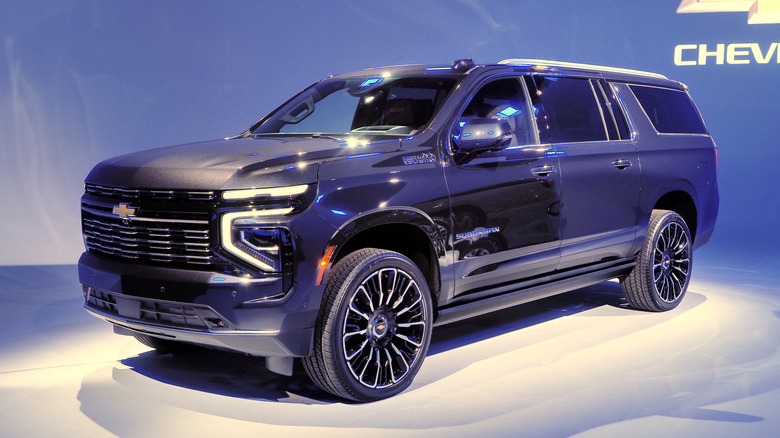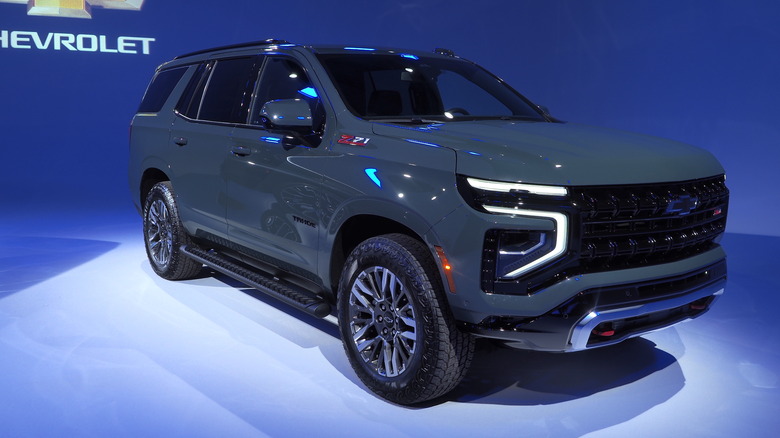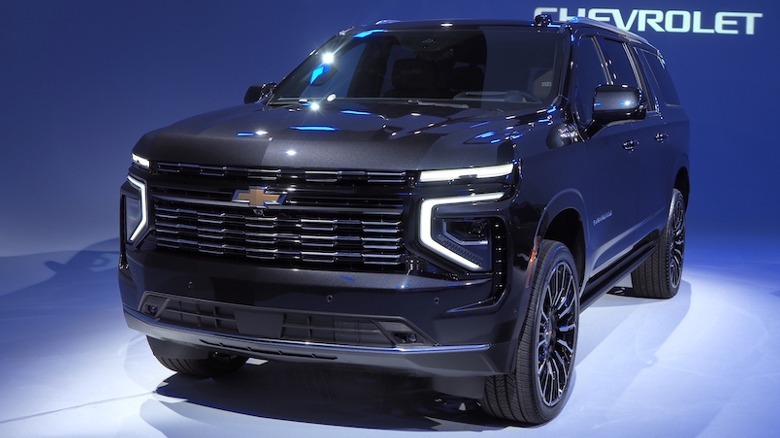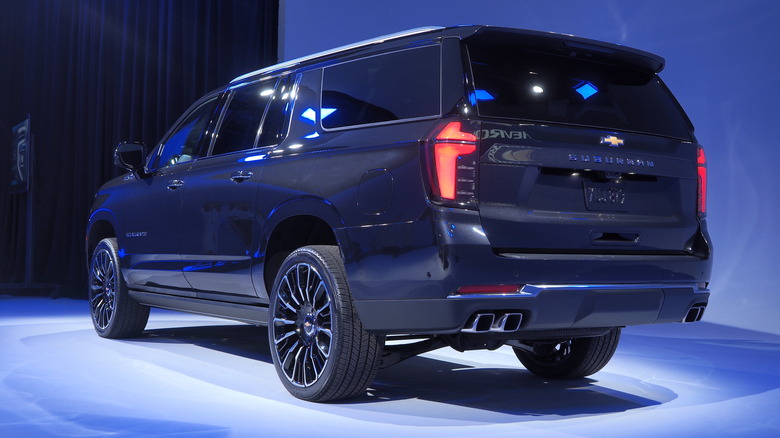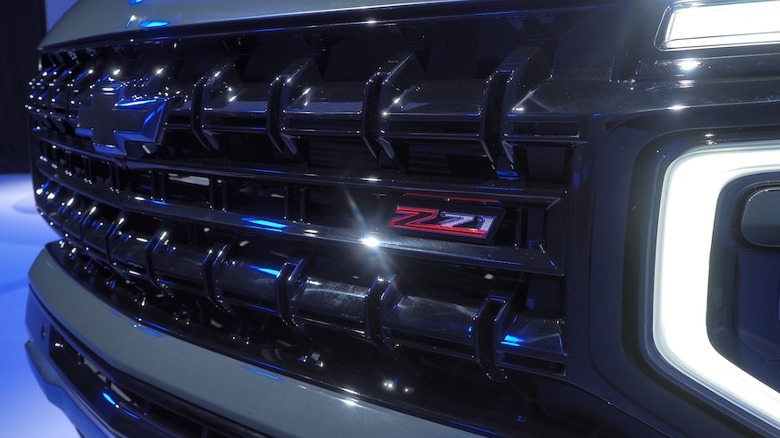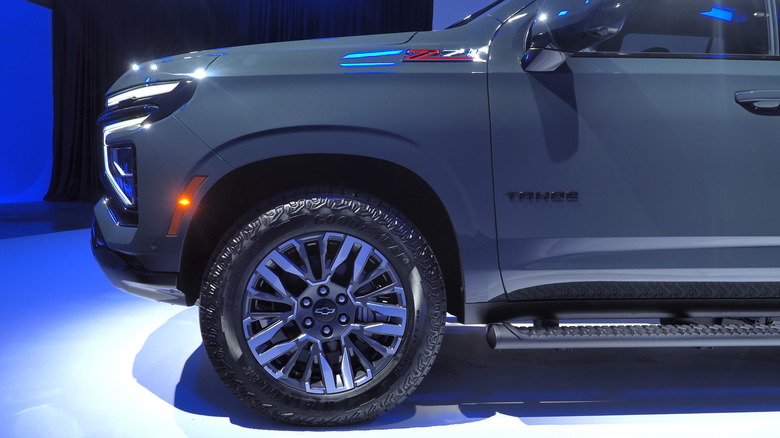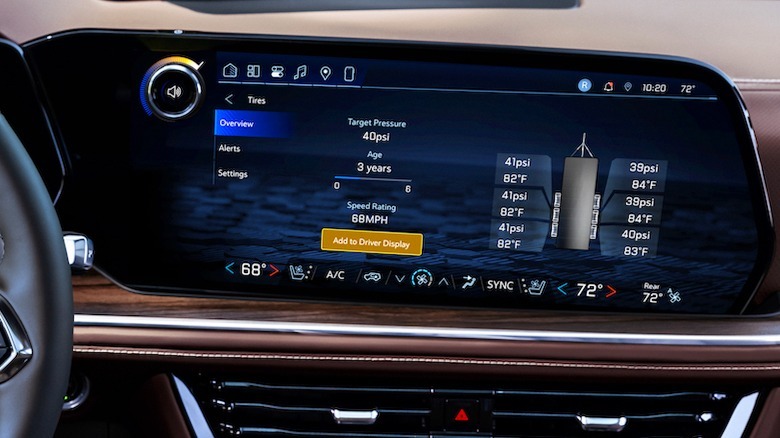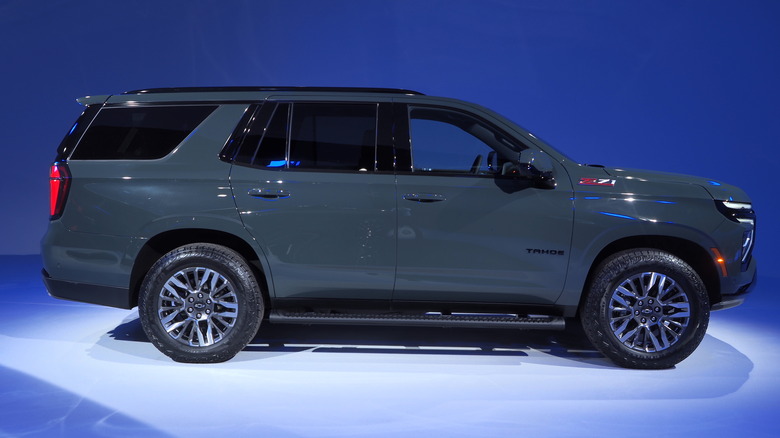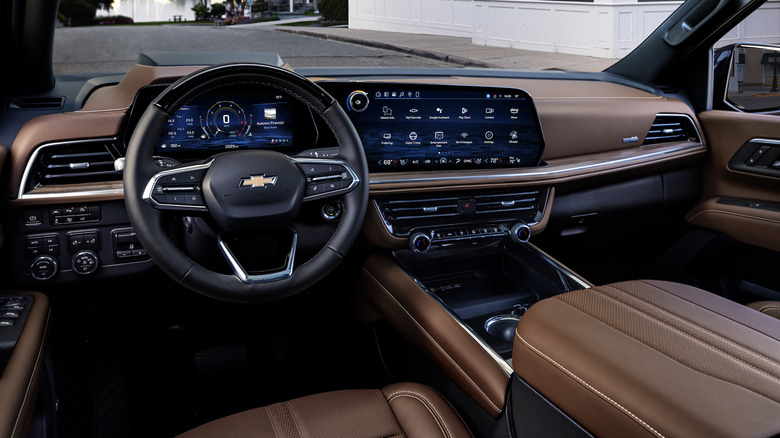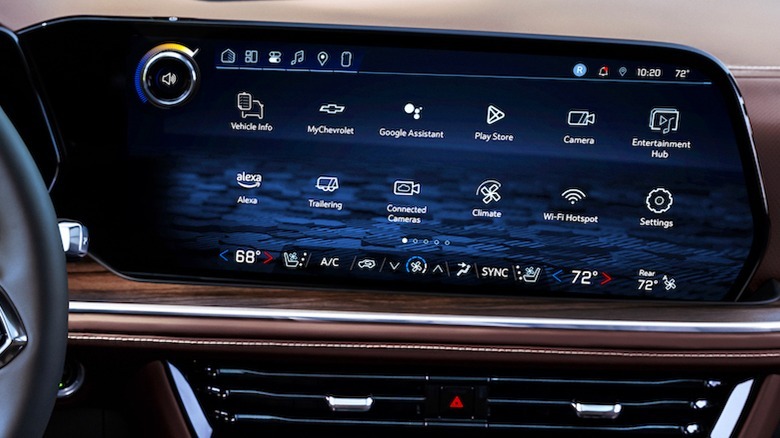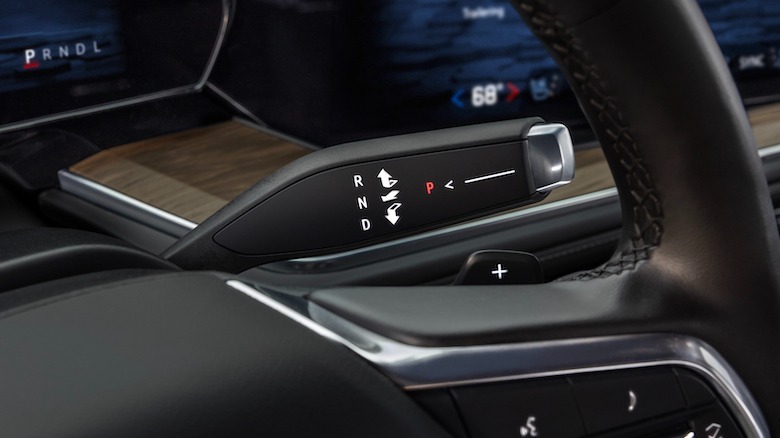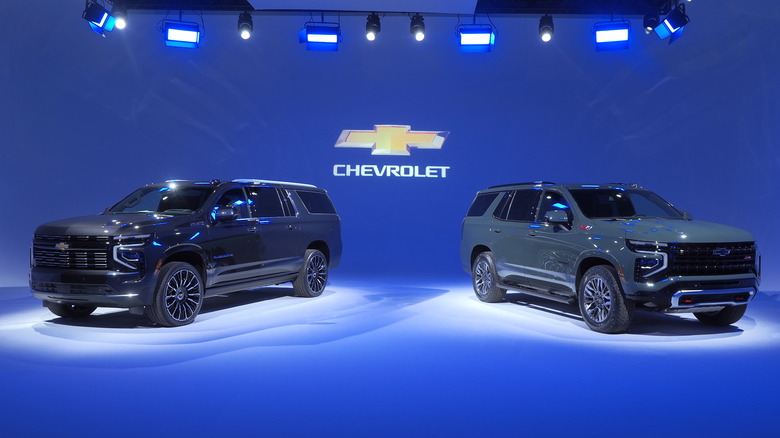2025 Chevrolet Tahoe & Suburban First Look: Biggest Issue Fixed But Something's Missing
It's fair to say the stakes are high for the 2025 Chevrolet Tahoe and Suburban. Having arguably created the blueprint for the full-size SUV segment, the three-row duo now find themselves sporting conspicuous target signs as rivals promise snappier styling, brisker driving dynamics, and more gadgets to play with.
Chevrolet's answer is to raise its game, inside and out. The new Tahoe and Suburban — the latter being the lengthier of the two — debut updated exterior styling and a serious improvement in cabin comforts, not to mention introducing technology not seen on any other GM model. All the same, some of Chevy's decisions here could have you scratching your head: particularly when it comes to drivetrain choices, and what seem like some obvious omissions under the hood.
Sales are expected to begin late in 2024, with pricing announced closer to that point; the 2025 Suburban and Tahoe will be manufactured at GM's Arlington Assembly plant in Texas.
Massaged styling moves these big SUVs upmarket
Given the dimensions here, it's no surprise that both the Suburban and the Tahoe remain imposing. The main exterior difference is to the front end, and in particular the lighting. The daytime running lights are more expansive, adopting a more distinctive "dual C" design, with the primary headlamps themselves shifted down slightly.
At the rear, the taillamp clusters are bolder and more cohesive. The Premier and High Country trims get welcome and walk-away lighting animations, plus animated swipe patterns for the turn signals.
There'll be six trims in all — LS, LT, RST, Z71, Premier, and High Country — with Chevy sprinkling in some distinctive detailing depending on grade. The Z71, for example, gets bright red (and functional) tow hooks in the lower fascia. For the first time, there'll be a factory option for whopping 24-inch wheels, while an AutoSense Power Liftgate will automatically open the trunk when the key fob is sensed behind the SUV.
Two gas engines to begin with
Under the hood, Chevrolet will eventually have three engine options. The LS, LT, RST, Z71, and Premier will get a 5.3-liter V8 gas engine as standard; a more potent 6.2-liter V8 will be standard on the High Country and offered as an option on the RST, Z71, and Premier.
Massage rather than reinvention is the name of the game for the chassis. The existing SUVs' multilink independent rear suspension has been updated, as has the steering calibration; the result, Chevrolet says, is a more refined and confident driving experience. Air Ride Adaptive Suspension will be optional on the RST, Z71, and High Country, with automatic load-leveling and ride-height adjustment, plus the ability to lower the SUV for easier entry and egress.
Magnetic Ride Control will be optional on the RST and Z71, and standard on the Premier and High Country. It promises to automatically adjust the shocks' damping rate according to the road conditions.
A more potent diesel should do the trick for towing
Coming later in 2025, Chevrolet will offer the 2025 Tahoe and Suburban with the second-generation 3.0-liter inline-six Duramax turbo-diesel. Available on all trims, and paired as standard with a 10-speed transmission, it'll pack 305 horsepower and 495 lb-ft of torque. That makes it more potent than the outgoing diesel option, while Chevy says it should also be quieter thanks to better sound insulation and other changes.
The turbo-diesel should be the pick of the three engines when it comes to trailering, Chevrolet says, though so far it's only confirming maximum towing support for up to 8,400 pounds on the Tahoe and 8,200 pounds on the Suburban. You'll need a trailering package to hit those numbers, mind.
The Max Trailering package has a high-capacity radiator and cooling fan, along with an integrated trailer brake controller. It also includes Hitch View, Hill Descent Control, and Blind Zone Steering Assist with Trailering. They're all familiar features: new for the 2025 model year are things like Forward Path Indication — showing the turning path for the trailering vehicle when you hit the turn signal — plus Trailer Tire Health monitoring that, assuming you put in accurate status information to begin with, can estimate the wear on your trailer's tires over time.
No sign of an electric Suburban any time soon
Given all of Chevrolet's efforts — and how important the Tahoe and Suburban are, both for GM's sales figures and for the segment in general — it's a shame that once again they've skipped electrification. Chevy's argument is that the diesel delivers the frugality full-size SUV buyers expect, but that seems a fairly lackluster excuse for the absence of even a mild hybrid system.
Indeed, it's unclear just what Chevrolet's plans are for the Tahoe and Suburban's electric future, and in the meantime, it's not like alternatives aren't popping up. Rivian's R1S already offers three rows of seats and up to 352 miles of range. Kia's hotly-anticipated EV9 will undercut it, meanwhile, starting at just $59,200 (plus $1,495 destination) when it arrives before the end of the year.
Is it too much to hope for an electric Tahoe? GM certainly isn't ignorant of the possibility of a big, all-EV SUV: the upcoming Cadillac Escalade IQ will be based on the Ultium electric vehicle platform and offer seating for seven. Chevy buyers will sadly have to be patient, it seems.
The most obvious changes are inside
At least they'll have a nicer, more tech-savvy cabin to wait in. Arguably the current Tahoe and Suburban's biggest shortcoming was the dashboard, which had begun to show its age in comparison to the gadgetry rivals have been building in. For 2025, the driver gets an 11-inch display for instrumentation, while a 17.7-inch infotainment touchscreen is standard across all trims and looks far more at home than the 10.2-inch version on the outgoing SUV.
As we've seen on other recent Chevrolet models, the infotainment system runs native Google apps like Google Maps and Google Assistant. A Trailer Navigation feature will take into account trailer size when calculating routes, while Super Cruise will be offered as an option in 2025, after the initial on-sale date. Equally welcome is the retirement of the little-loved buttons and toggles for the old SUV's transmission, replaced by a column shifter.
The HVAC system continues to get dedicated switchgear, while drive and trailering controls are clustered together to the left of the redesigned — and more premium-looking — steering wheel. The wireless charging pad has shifted forward, from the center armrest to a more sensible spot in the center console, and there are new trim options including real wood and wingtip perforated leather in the High Country.
A long options list
Some of the more impressive tech, though, you can't see. A new Interior Motion Detection sensor promises to spot "micro-movements" in the cabin, including the tiny gestures a forgotten baby might make. The SUV will then sound escalating alerts as a reminder.
Owners could also check in — both inside the Tahoe and Suburban, and around it — with the Connected Cameras option. It shows a 360-degree view around the SUV in the myChevrolet app, with automatic crash recording, dash cam functionality, a live view, and cloud storage via OnStar's 4G LTE connection. Some elements will require an OnStar subscription, with pricing to be confirmed closer to the Tahoe and Suburban's on-sale date.
A 360-degree camera, lane-keep assist, front pedestrian and cyclist braking, enhanced automatic emergency braking, enhanced automatic parking assist, and Teen Driver — which allows for limits placed on younger drivers — will all be standard, too. We'll know full spec details, pricing, and economy numbers closer to the 2025 Tahoe and Suburban arriving in Chevrolet dealerships next year.
